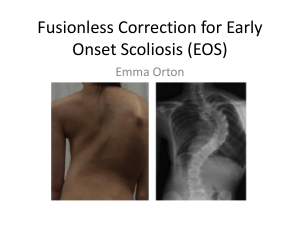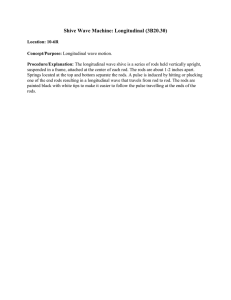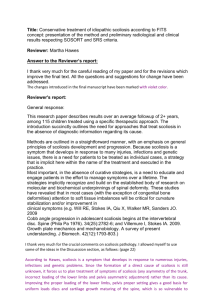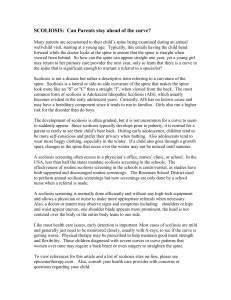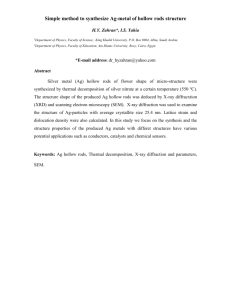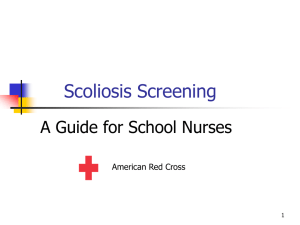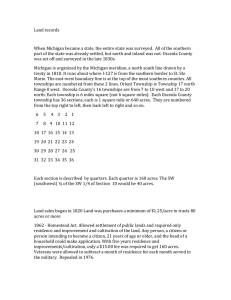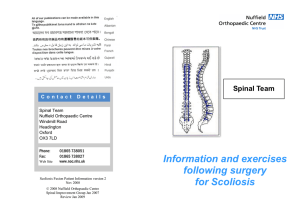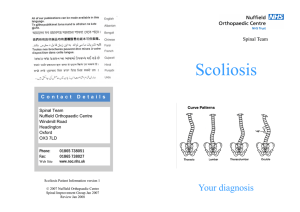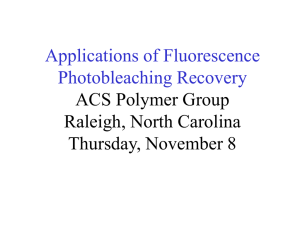MAGEC Growing Rod Study
advertisement
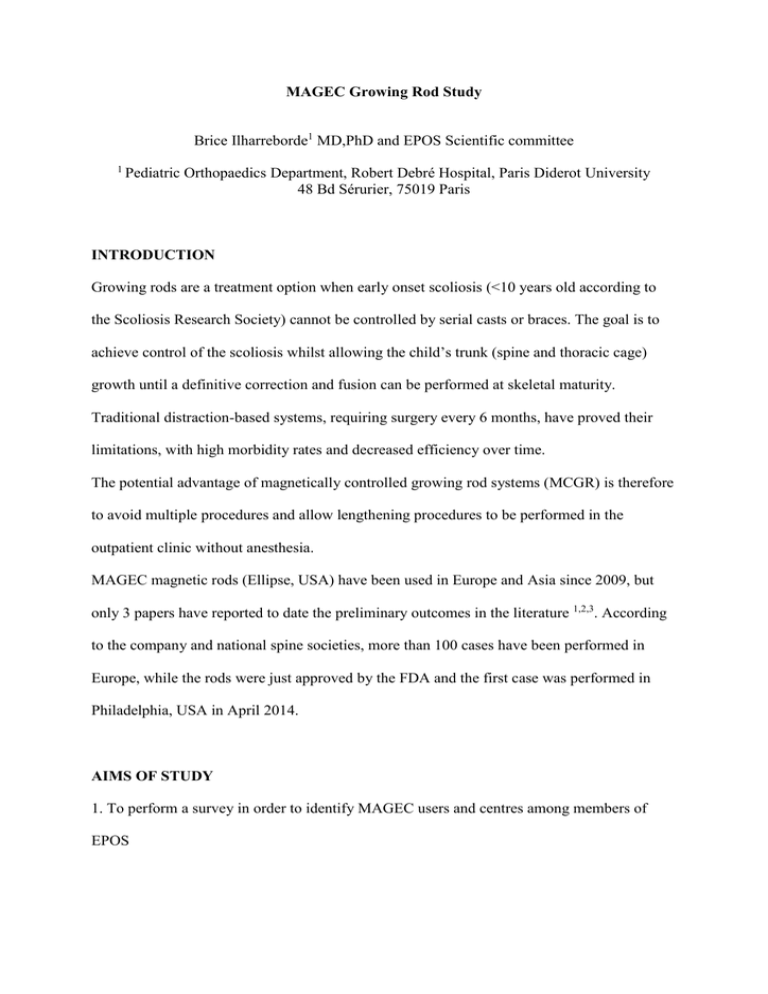
MAGEC Growing Rod Study Brice Ilharreborde1 MD,PhD and EPOS Scientific committee 1 Pediatric Orthopaedics Department, Robert Debré Hospital, Paris Diderot University 48 Bd Sérurier, 75019 Paris INTRODUCTION Growing rods are a treatment option when early onset scoliosis (<10 years old according to the Scoliosis Research Society) cannot be controlled by serial casts or braces. The goal is to achieve control of the scoliosis whilst allowing the child’s trunk (spine and thoracic cage) growth until a definitive correction and fusion can be performed at skeletal maturity. Traditional distraction-based systems, requiring surgery every 6 months, have proved their limitations, with high morbidity rates and decreased efficiency over time. The potential advantage of magnetically controlled growing rod systems (MCGR) is therefore to avoid multiple procedures and allow lengthening procedures to be performed in the outpatient clinic without anesthesia. MAGEC magnetic rods (Ellipse, USA) have been used in Europe and Asia since 2009, but only 3 papers have reported to date the preliminary outcomes in the literature 1,2,3. According to the company and national spine societies, more than 100 cases have been performed in Europe, while the rods were just approved by the FDA and the first case was performed in Philadelphia, USA in April 2014. AIMS OF STUDY 1. To perform a survey in order to identify MAGEC users and centres among members of EPOS 2. To establish a long-term multi national longitudinal study (until skeletal maturity) to assess the morbidity and collect long-term outcomes data METHODS 1) Access to users through the manufacturer of the implant (Ellipse, USA) (before September 2014) 2) Questionnaire to EPOS members, sent through email, aiming to determine the number of MAGEC users in each country, identify their main specialty (pediatric orthopaedics, spine), and clarify the indications (age, etiology, Cobb angle) for MAGEC rods (analysis before December 2014) 3) Database creation (first trimester of 2015) 4) Report complications and number of procedures 5) Radiological analysis from preoperative to skeletal maturity, including spinal growth (T1Sacrum) and Cobb angle measurements 6) If possible establish a prospective follow-up of pulmonary function among treated patients REFERENCES 1. Cheung KM, Cheung JP, Samartzis D, Mak KC, Wong YW, Cheung WY, Akbarnia BA, Luk KD. Magnetically controlled growing rods for severe spinal curvature in young children: a prospective case series. Lancet. 2012 May 26;379(9830):1967-74 2. Dannawi Z, Altaf F, Harshavardhana NS, El Sebaie H, Noordeen H. Early results of a remotely-operated magnetic growth rod in early-onset scoliosis. Bone Joint J. 2013 Jan;95B(1):75-80 3. Hickey BA, Towriss C, Baxter G, Yasso S, James S, Jones A, Howes J, Davies P, Ahuja S. Early experience of MAGEC magnetic growing rods in the treatment of early onset scoliosis. Eur Spine J. 2014 Apr;23 Suppl 1:61-5
